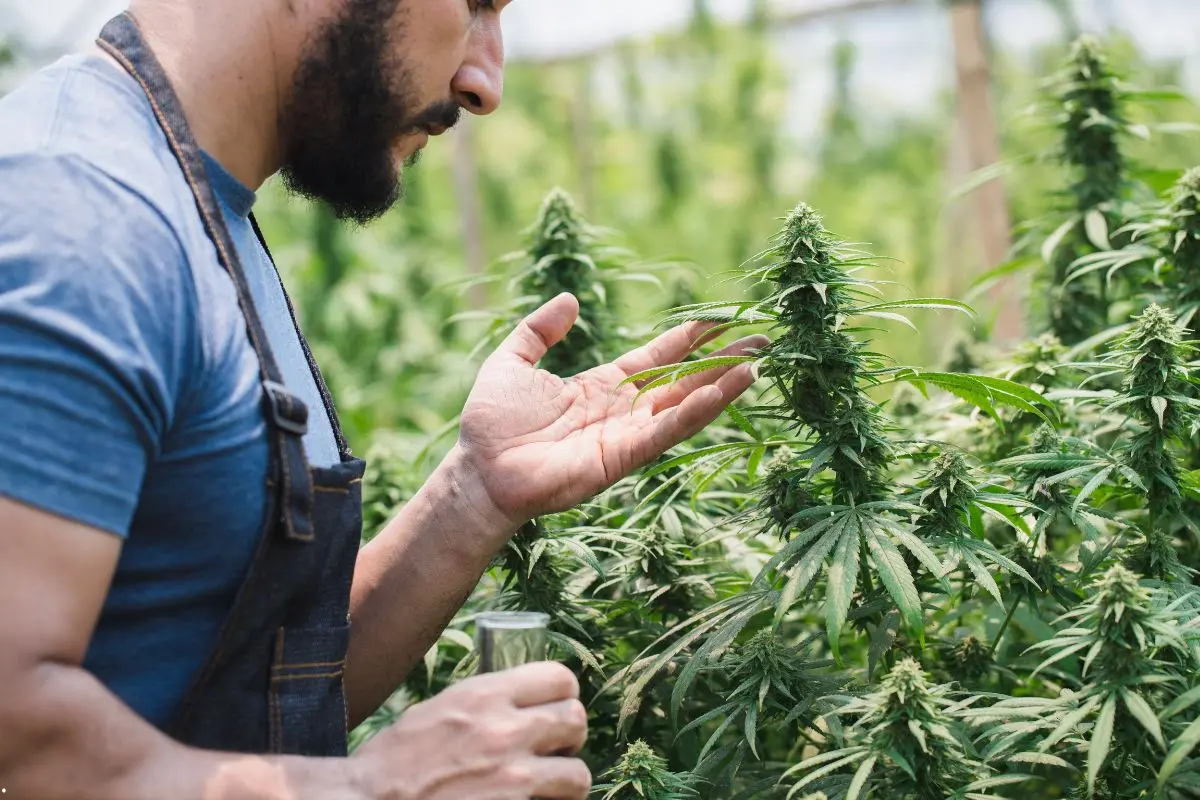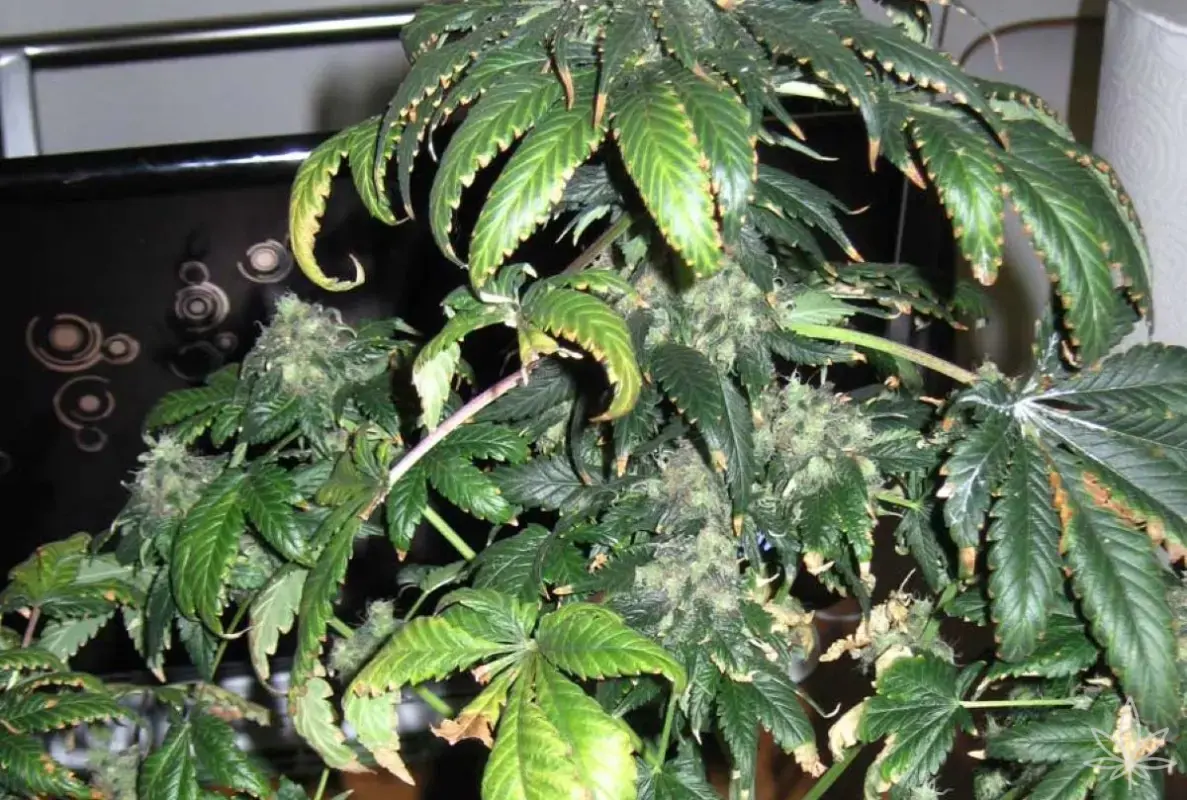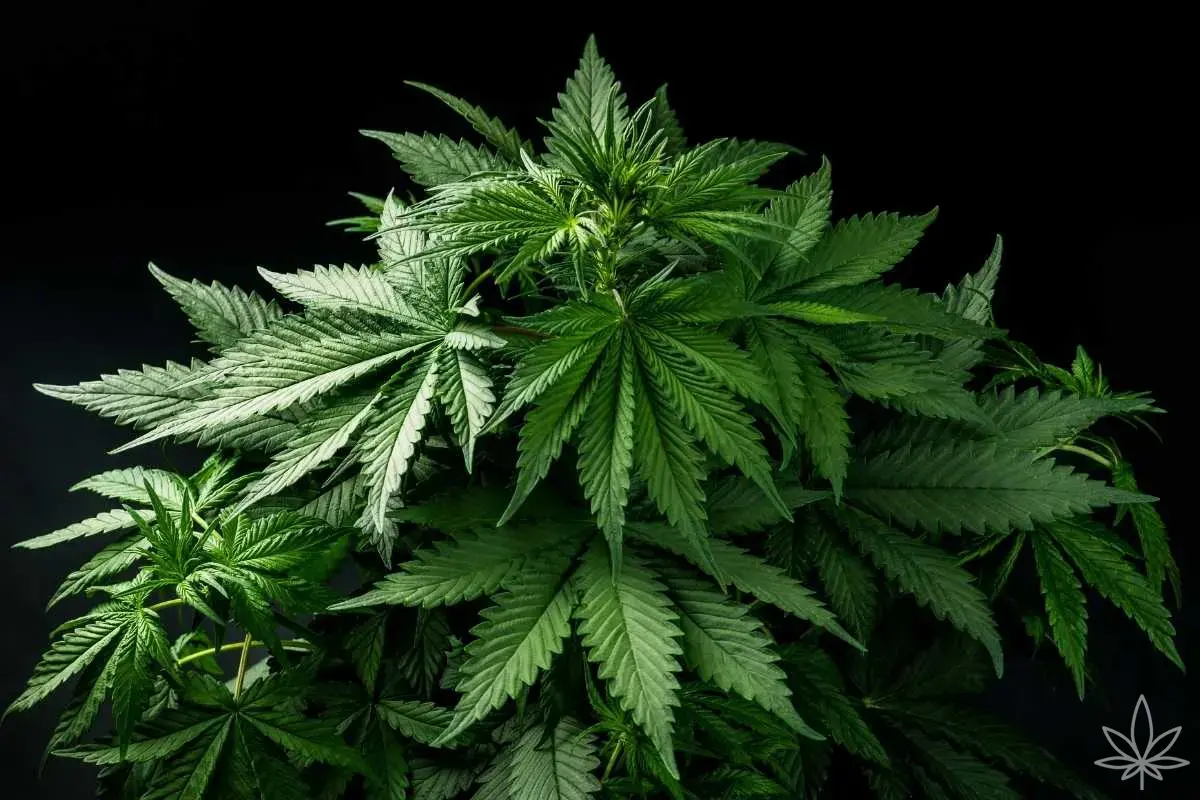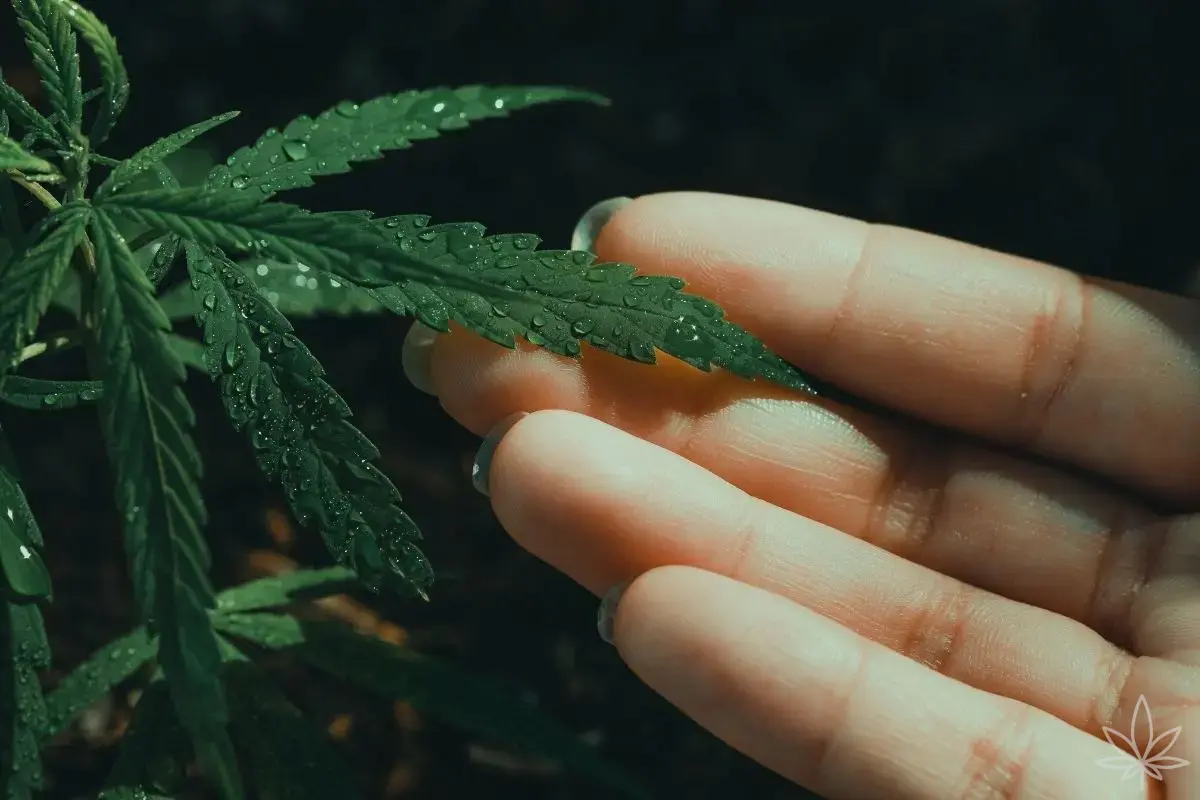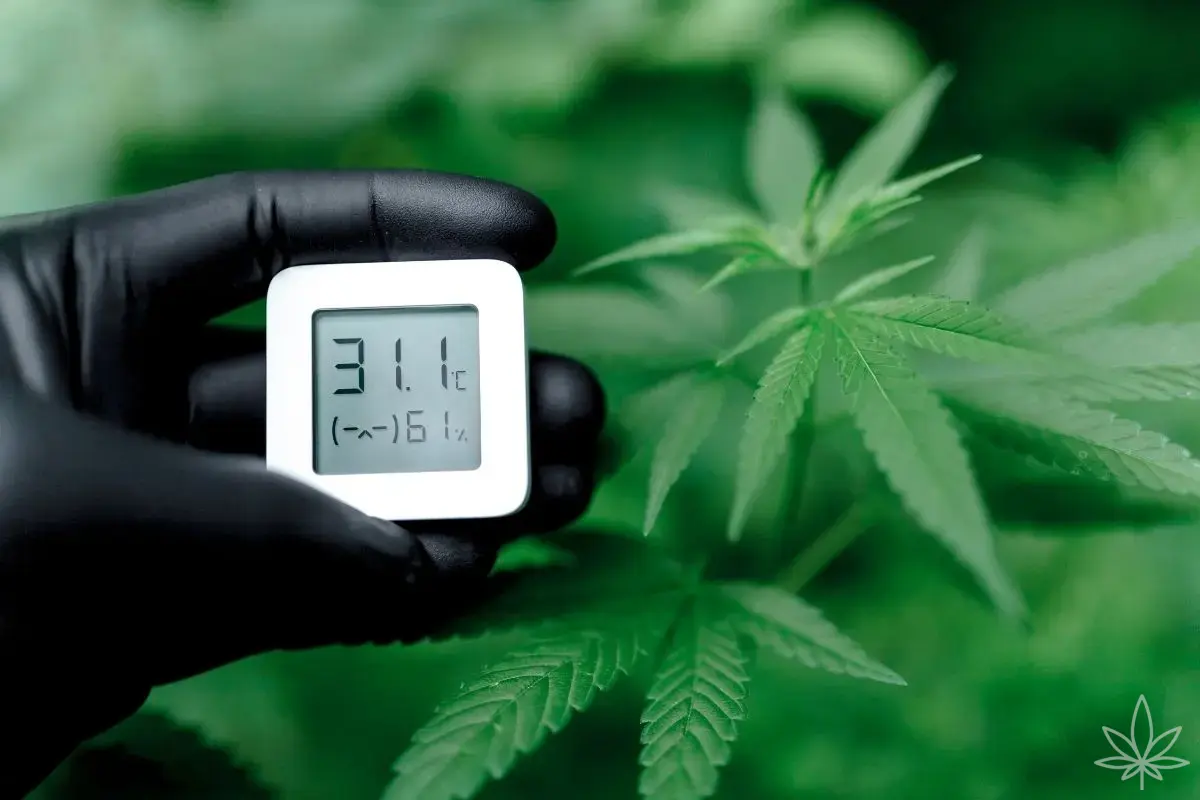Here’s a faithful English version of the article, keeping the essay-like voice and structure.
We all know the moment: the grow enters its most beautiful phase, colas swell, the aroma thickens, and your mind drifts to plans for a perfect dry. And right then—when everything looks like a catalog spread—Botrytis cinerea, better known as gray mold, shows up. It doesn’t make a scene. It simply takes advantage of a little moisture and still air to turn weeks of work into gray dust in a matter of days.
How a Botrytis Outbreak Begins
At first, there’s nothing “dramatic.” A subtle dulling on a few sugar leaves, as if a brush had wiped away their shine. Then the scent shifts—not resinous, but sweet-stale, hard to name and hard to ignore. In dense buds, the mold develops from the inside out—what you see outside still looks great while the core begins to rot. A gentle squeeze betrays softness where there should be spring. That’s the alarm. The sooner you act, the more you save.
Why Right Now?
Botrytis thrives when biomass is high, relative humidity creeps up, nights run cooler, and air barely moves. The classic “risk window” is the last 2–3 weeks of flowering, especially when:
- nighttime RH spikes above ~55–60%,
- dead zones in the tent lack air movement,
- the plant’s flower/leaf structure is very dense,
- condensation (dew) forms inside colas after lights-off.
It doesn’t need much—just a few hours of stagnant air, a lingering mist droplet, a tired filter—and you’ve created a microclimate where the fungus grows faster than you can brew a coffee.
Early Detection – The Art of “Seeing with Your Fingers”
Experienced growers get alert when they notice:
- individual florets turning gray and crumbling at a touch,
- sugar leaves browning at the base and pulling away like paper,
- a “steamed,” waterlogged feel inside the cola—loss of springiness,
- a drift toward a sweet, musty smell.
Don’t be afraid of small exploratory cuts. Better to open one suspicious cola and confirm it’s clean inside than to find a gray cathedral of bloom the next morning.
What to Do Once Botrytis Appears
There’s no room for half-measures. Botrytis isn’t a discoloration that “passes.” It’s a race.
- Immediate isolation and removal.
With a sharp, disinfected tool (isopropyl alcohol), remove all infected tissue with a buffer of healthy material. Do not “dust it off”—spores travel like powder. - Double down on hygiene.
Wipe tools after every cut. Change gloves. Seal infected material in a bag and remove it from the space. Never dry or process moldy buds for consumption. - Fix the climate in an hour, not tomorrow.
Drop RH to ~42–48% during the day and keep nights slightly warmer than days (inverting the delta-T reduces condensation). Increase air exchange and create gentle, local airflow through the canopy. - Consider a partial, controlled harvest.
If new hotspots appear daily, harvest the ripest sections in stages before the fungus does it for you.
Prevention — Don’t Give Botrytis a Reason to Visit
The truth: gray mold wins with logistics. Your counter is organization.
- Layered airflow.
One fan “at the front” isn’t enough. Create light, constant movement in the lower, middle, and upper canopy. Leaves should tremble, not flap. Dead zones? Reposition fans, add small clip-ons. - Humidity under control, especially at night.
Most damage happens after lights-off. Increase extraction when lights go out; run a dehumidifier for an hour or two early in the dark cycle. Late flower target: 45–50% RH. - Plant architecture.
Gentle, targeted defoliation opens the interior. Remove leaves that block airflow or glue florets together. Better a little less foliage than one wet “pocket-cola.” - No wet flowers.
Foliar sprays in veg—fine; in flower—don’t. Avoid raising local humidity at dawn or right after lights-off. If you must water late, dose so the medium doesn’t “steam” overnight. - Cleanliness and discipline.
After each cycle, wash tent walls, trays, grates, fans. Inspect, clean, and replace filters and ducting as needed. Treat incoming plants like VIP guests: inspect and, if needed, quarantine. - Right-size your colas.
Baseball-bat colas are tempting, but they suffocate from the inside. SCROG nets and training that spread flower mass into many smaller “breathing” sites cut risk while often preserving total yield.
A Brief Note on Drying (because mold likes to return here, too)
Sometimes pristine weeks end with… poor drying. Post-harvest, keep RH around 55–60% and temps steady at 17–19°C (63–66°F), with gentle airflow near—not directly on—the flowers. Too wet, and the mold returns; too dry, and the aroma evaporates. Patience and balance win.
What Not to Do — A Short “Never” List
- Never spray late-flower buds hoping chemistry will “eat” Botrytis deep inside a cola.
- Never mix infected material into the rest of the harvest (“we’ll make extract”)—that’s a health risk.
- Never shrug off a small hotspot. Botrytis doesn’t joke.
When to Accelerate Harvest vs. Keep Fighting?
If hotspots keep appearing despite climate corrections and plants are in the ripeness window—measured, staged harvesting preserves quality. If the problem is localized and the climate is now stable—clean cuts, strict hygiene, and 48–72 hours of alert monitoring can stop it. Think of it like a grass fire: stomp it early or watch it become a forest.
Conclusion — Beating the Fungus with Organization
Botrytis isn’t “punishment”; it’s the predictable outcome of certain conditions. It steals yield where we let it feel at home: moisture, still air, warm, dense pockets inside colas. The antidote is simple in theory, demanding in practice: layered airflow, stable nights, plant architecture, and hygienic discipline. And if gray mold still knocks—cut clean, discard without regret, and fix the environment immediately.
Paradoxically, many of us get our best feel for flowering only after a run-in with Botrytis. It teaches the core skill of this craft: quiet control of the invisible. And when you open the drying room at season’s end with no hint of gray—you know it wasn’t brute force that won, but consistency.

